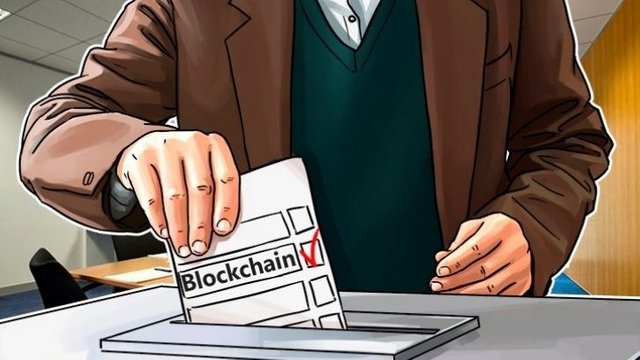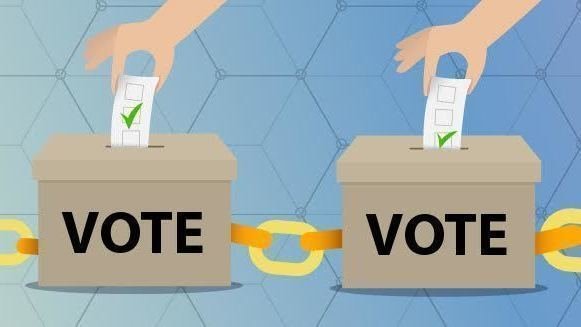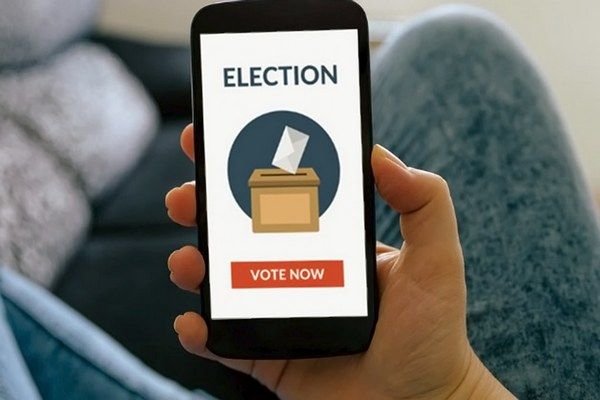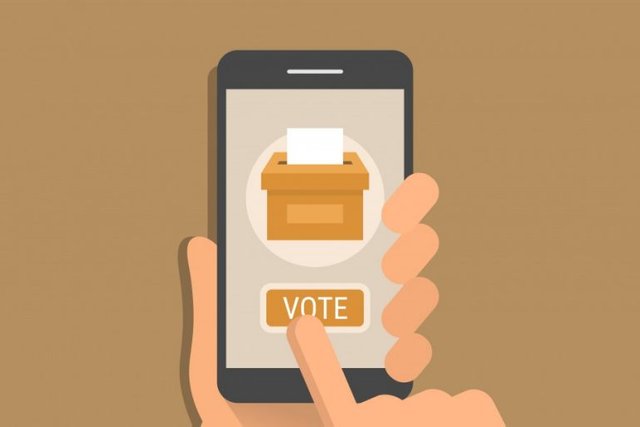Elections on a blockchain
Greetings, colleagues! In today’s article, we disclose the issue of elections on the blockchain and GONT’s approach.
The technology of blockchain makes remote voting possible, because it is designed to protect data from third-party intervention by intermediaries and preserve the anonymity of participants. This makes it possible to conduct the most transparent and fair elections without risks. But is it really so?

Elections on the blockchain: fiction or reality?
One of the first initiative of voting with the use of blockchain technology was the Danish Liberal Alliance party: the leadership offered to hold an internal vote at the annual meeting of the party members in 2014.
In 2016, Australian bitcoin enthusiasts created the “Flux party”. The model of this batch assumes the use of tokens, which can either be used for independent voting, or transferred to competent proxies. The concept presupposes the election of six senators who perform a representative function and vote in parliament for various legislative initiatives according to the distribution of the participants’ votes in the party blockchain-system.Then the Libertarian Party of the USA used the technology of the distributed roster in the election of candidates for inner-party positions in Texas.
Later, the Republican Party of Utah used blockchain to vote for candidates in the primaries stage.
In Kiev, a memorandum on the development of the blockchain service for voting E-vox was signed. The system ensures transparency and reliability of the results of voting at all levels – from municipal elections to the election of parliamentarians. The process of development of the service also implies the creation of open source software, the corresponding license MIT. The E-vox technology is based on the Ethereum blockchain.
In 2017, the “Apple” party used the Polys platform for its elections. This was the first precedent of using blockchain technology for online voting in Russian political history. The basis for Polys is also the smart contracts of the Ethereum blockchain-platform, through which it is possible to create decentralized online services.
In 2018, the world’s first presidential election was held in Sierra Leone (West Africa) with the use of blockchain technology. The technical solution was provided by the Swiss fund Agora, which is engaged in digital technologies in voting. The startup hopes that the detachment will solve the problem of the crisis of confidence in the political system and in elections in particular.
It was also proposed to use the technology of the distributed register in the elections of the mayor of Moscow, which will be held on September 9, 2018.
Service Elections. Rules of voting.

Obviously, the use of a blockchain without the basic basis of service decentralization has no practical sense and is a sign of a scam project.Therefore, it is necessary to clearly state what will be the result of the decentralization of the service in the case of “elections” and how the trusted environment will be created.
Criticism of the “frontal” approach and the search of decentralization.

The technology of blockchain, used in online voting, has a number of obvious shortcomings. Let’s consider the basic.
PROBLEMWhy is voting organized on smart contract tokens scam?
- With the help of one contract, you can vote from a variety of ETH addresses => Simplicity of cheating votes (“carousel” – in real life).
- Few people have addresses in ETH => No opportunity to vote.
- Expensive.
Voting with a smart contract => Gas consumption => Large transaction costs (~ $ 1 per vote).
The price of the ETH is constantly growing => impractical – no one will pay. - There is no systematic approach to the encoding of election transactions and the presentation of transaction coding in a decentralized manner => None of the election participants will be able to check the results of voting at any time (“in the next hundred years”).
Elections are “owned” only by the organizer (for example, as the sole keeper of all ether addresses and transaction codes). The voter does not have the tools to check the results of the voting as a total (vote count), or for any other participant. Such elections are not different from a completely non-trusted environment such as “GAS-Elections”.
SOLUTIONWhat will be implied by the decentralization of elections?
- Any participant-voter can check the election results at any time (within the next hundred years). Participant should be able to a) find these elections in a global blockchain b) always have keys to decode the results even in case of loss of communication with the organizers of the elections.
- All the codes of all transactions must be opened in the public domain.
It is necessary to introduce a global ontological space – GONT.
The concept of alternative gas – AlGas.To implement any services on top of GONT, we introduce our own gas – AlGas. This will enable us to properly monetize any decentralized services.Basic concepts of the new trusted environment.Before the beginning of voting for all the voters whitefishes are generated at the request of the organizer. Whitefishes are tokens of the new AlGas . This is the initial INIT status of the service. Whitefish is also located on the initial INIT instruction (transaction). Any user can check this by downloading the whitefish and uploading it to his personal ONTOProc. ONTOProc is generated “on-demand” for the entire election service and for all users.
Whitefishes are binary modules of “iron” smart contracts, registered in the processor contracts – ONTOProc. The whitefishes are evolving during the voting process. New transactions are added, depending on the events at the polling station.At any stage of the election (INIT, Registration, Vote, Stamp, Writeback to blockchain), the user can download any service shiga (his or others’) to verify the veracity of the vote (at least his personal – that is, nobody has changed my choice in interval).At the end of the voting, all the sigas of all users are collected in one package and sent to perpetual storage in a global block of accounts with one transaction.At any time this package will be available to any participant in the election for verification. Decryption of the same transactions will be done with the help of a personal ONTOProc generated for the user.
Monetization and consumption of AlGas.What does the user charge for the system?1) Generation (automatic assembly) of ONTOProc under the specified service occurs on a separate server – “processor factory”. The user owns the ONTOProc assembly for life, which will be his tool for working with the whitefish (the “iron” smart contract) of elections at any given time. Also, the user will be able to work with whitefish of other voters of this elective event.
Also, through decentralization, the user becomes the owner of part of the source code ONTOProc (which was generated for this service) ~ 100 thousand – 1 million lines of C ++ code (depending on the complexity of the service). This source code is also decentralized – anyone can learn it.2) Expansion of GONT space with new transactions.When creating a voting service, one of the nodes of the global decentralized GONT space is expanded by transactions specific for this service. For example, a list of voters or question-answer voting. This leads to the need to “expand” the GONT space, which in itself is a transaction and results in the consumption of AlGas.3) Execution of whitefish.Whitefishes are executed during the service (the concept of “evolutions” of the whitefish) in accordance with the “iron” smart contract.
After the user has “expanded” GONT for his service, he can resell new transactions and associated “iron” smart contracts to other users. This simplifies the migration of services to other users (there is no need to create everything from scratch) and enhances decentralization.
For example, the “election” service has a fairly simple “evolution” of the whitefish. But there can be much more complex services, after the decentralization of which, based on GONT, you can sell the contracts themselves. Thus, there is a market of “iron” contracts (for the currency AlGas).
Formation of the ontological structure of the GONT also takes place in a decentralized way with the help of a separate blockchain.
More details about iron contracts.
Service “Elections” is managed and controlled by “iron” smart contracts.
One service can serve several contracts at the core level of the processor (i.e., 1 service <=> many contracts).
Processors released to the market for servicing the services can be 1 million or more. They can form processor factories for servicing services by API.Processors are launched on the market using automatic build of meta-information about the service.According to the description of the smart contract in GOL (GONT Language), the core of the service processor is generated.
Iron contracts for the Elections.

Two main contracts:
Contract 1
The evolution of the whitefish of elections (you can say, an electronic bulletin)
Rules for adding new transactions to the whitefish as the service go through.
Contract 2
Election results counting
Counting of results is carried out by means of summation on the accumulation registers when all the signals of all participants of elections that reached the stage STAMP – “Printed” are executed. From the point of view of decentralization, the same contract must be executed both on the user side and on the server side of the service. After the STAMP stage, all whitefishes can be counted (any number of whitefish) both on the server side and on the voter side. And the results can easily be compared.To implement the count of whitefish, you need to generate a new contract (new processor = Contract 2) and distribute it to all participants in the election.
Algorithm for Creating Elections

Expansion of contract space.What other contracts can be there?
EXAMPLES:
- Take into consideration the “weight” of the vote in voting. For example, voting with preferred or ordinary shares.
- Give an opportunity to re-vote until a certain date.
- Voting by proxy.DNA service.
How to identify the core of the service?
SITUATION:
Over time, 1 million processors and 1 billion signatures can be released to the market.Which signature is suitable for which processor?
SOLUTION:
We use GONT for the DNA effect of the service.
The unique address of this service from the decentralized GONT space is sewn into the processor and the whitefish.In this case, before running the whitefish for execution, the processor will check the coincidence of the DNA service and the whitefish. So we can easily filter out all the “non-native” for this service whitefishes at the level of the processor’s executive core.
Identification of whitefish with the help of GONT:
- Whitefish only of this service.
- Whitefish only of this contract (the service can have many contracts).
All other “non-native” processors from the market will not be able to perform this whitefish.
Thank you for attention! See you in the next articles.
GONT